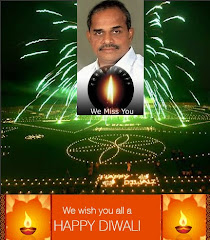A decade ago when Sharad Pawar was quitting the Congress over the Sonia Gandhi foreign origins issue, he told a group of journalists, "In the Congress party, there is no place for genuine mass leaders. There is only the high command and the loyal followers." That was 1999. Ten years later, it seems that Pawar was both right and wrong. He was right to the extent that in the Congress, the high command is ubiquitous and the Supreme Leader is unchallenged. He was wrong that the Congress could no longer throw up a regional satrap. Y.S.Rajashekhar Reddy was proof that it still possible to be a virtual one man show in state politics, and yet survive in the Congress.
When YSR became chief minister in 2004, he was fighting both history and geography. Congress chief ministers in Andhra had been practiced in the art of musical chairs. The previous Congress government in 1989 had seen three chief ministers in five years. The Congress government before that had seen four chief ministers in five years (a chaotic situation that eventually saw the rise of the idea of 'Andhra pride' in the guise of NT Rama Rao). Even the wily P.V.Narasimha Rao, who was able to stay as prime minister for a full five year term as head of a minority government could only last for fifteen months in Hyderabad in the 1970s. It was almost as if it was more difficult to manage the complex caste and regional factions in Andhra than it was to control politics at the Centre. More so in YSR's case because he came from the relatively backward region of Rayalseema, not seen as dominant in state politics.
And yet, YSR was able to prove the skeptics wrong, not only by lasting the full five year term, but even more remarkably by getting re-elected with an equally comprehensive mandate five years later. What made YSR succeed where others had failed? His critics - and there is no shortage of them - will tell you that his political style was more akin to Gujarat's Narendra Modi than to any traditional Congress state leader. He was ruthless (witness the manner in which he crushed all political opposition to him) and anti-democratic (notice how he jailed editors and sought to financially destroy those who spoke out against him). Unlike Modi though, there were serious charges of corruption which he was confronted with, charges that he seemed almost contemptuous of.
That YSR could get away with his authoritarian streak was because of his ability to build a firm rapport with the masses, a quality first detected during his hugely successful padyatra in 2003. A Chandrababu Naidu may have been feted by the pink papers, but he was eventually consumed by the euphoria of having been anointed the CEO of Cyberabad. YSR, on the other hand, was able to combine strong doses of populism with a delivery system that reached out to the Andhra countryside. Then, whether it was the success of his health insurance scheme, his irrigation projects, or the spread of NREGA, YSR was able to convince a majority of Andhraites that he would benefit them through direct cash transfers to the poor, even it meant bypassing the traditional elites of the state. In the process, he was able to overcome the caste and regional divides that had stunted governance in the past. The idea of a separate state of Telengana, for example, may have an emotional resonance, but what price statehood when you don't have cash in your bank account?
In that sense, YSR had the 'common man' touch, originally promoted by NT Rama Rao. NTR's two rupee rice scheme, for example, revolutionized the trajectory of Andhra politics, creating the basis of a pro-poor programme that has since been replicated in other states. YSR did not have NTR's charisma and star appeal. What he did have though was a certain down to earth welfarist approach to politics, where even as he and his family built a multi-crore empire, he did not forget that the foundation of his power was dependent on the support of the 'aam admi', that his electability would be ensured only if his schemes benefited the rural masses.
No surprises then that YSR was a great favourite of Sonia Gandhi, whose political philosophy is based on the core idea that the Congress's future lies with reaching out to India's poor. In fact, it would be no exaggeration to suggest that the UPA would not have been in power in 2004 and 2009 but for the remarkable success it achieved in Andhra. In the process, the central Congress leadership ended up virtually 'outsourcing' the party in Andhra Pradesh to YSR. While this might have bred resentment among an entire generation of Congress leaders in the state, it gave the workaholic 'Tiger of Cudappah' the space to carve out an identity for himself. Unlike several other Congress chief ministers who have felt routinely undermined by faction-fighting, YSR's success showed that it is possible for state leaders to flourish only when they are given the autonomy to operate without constant interference from the center.
The flip side though of creating a personality cult in a political party is that when the individual disappears from the scene, then the resultant vacuum is almost impossible to fill. That will be the big challenge confronting the Congress as it comes to terms with the loss of its strongest chief minister. Does the party revert to its time-tested formula of imposing a 'weak' leader on a state in the belief that such a chief minister will be acceptable to all factions? Or will it acknowledge that the YSR phenomenon demands a search for another tough, empowered state leader? In resolving its dilemma, we will know if YSR was indeed the last Congress regional satrap. Or a lasting symbol of a new model of governance.
--Rajdeep Sardesai IBNLive
Thursday, October 1, 2009
Subscribe to:
Post Comments (Atom)










No comments:
Post a Comment